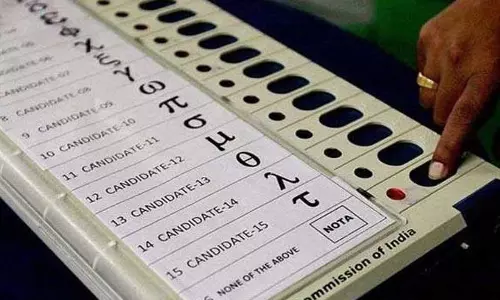
New labour force survey confirms unemployment rate at 6.1 pc in 2017-18
text_fieldsNew Delhi: The unemployment rate in 2017-18 was 6.1 per cent, corroborating the pre-election leaked report that had claimed joblessness at a 45-year high.
The leaked report on periodic labour force survey (PLFS) from July 2017 to June 2018 had on comparison with previous surveys concluded that the joblessness was at the highest level in 45 years.
However, releasing the survey report after taking into account the expert committee recommendations, Statistics Secretary Pravin Srivastava told reporter, "It is a new design and a new matrix. It would be unfair to compare it with the past. This 45- year high is your interpretation. I don't want to claim that it is 45-year low or high."
Elaborating further, he said, "The point is that it is different matrix. From 2017-18 onwards, you will be getting regular estimates and this (labour force survey) can be used as a base. When we change the matrix, it is very difficult to measure (compare) because there is no means to do a retrospective analysis in that year based on earlier matrix."
The data released by the government on a day when ministers of the Narendra Modi cabinet took charge showed 7.8 per cent of all employable urban youth being jobless, while the percentage for the rural was 5.3 per cent.
The joblessness among male on all-India basis was 6.2 per cent, while it was 5.7 per cent in case of females.
It also showed that the unemployment rate for males was higher at 7.1 per cent in cities compared to 5.8 per cent in rural areas.
Similarly, the joblessness for women was also higher in urban areas at 10.8 per cent compared to 3.8 per cent in rural areas.
The ministry said the PLFS needs to be seen as a new series for measuring employment and unemployment on an annual basis. It is important to note that with the rise in education levels in the economy and rise in household income levels, the aspiration levels of educated youth have also risen.
Thus they may no longer be willing to join the labour force or work force requiring low skills and low remuneration. The PLFS results give the distribution of educated and unemployed persons across the country which can be used as a basis for skilling of youth to make them more employable by industry, it said.
About the National Statistical Commission (NSC), Srivastava said, "The NSC makes its recommendation but the ministry has to consider it. They can only make recommendations. The NSC has the role to see statistical system in entirety in addition to statistics ministry and states. There is no change in the functioning of ministry. The restructuring of ministry was approved by the Cabinet."
He also informed, "The data for PLFS for January to March will be released next month. We have brought two quarterly data on labour survey. We are coming out with consumption expenditure survey for 2017-18. We are expecting it in June. You can then compare unemployment captured by that survey with PLFS."























